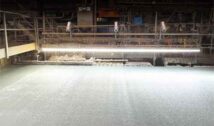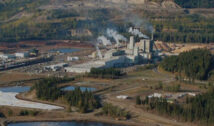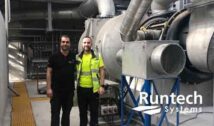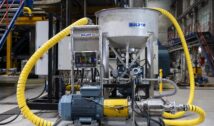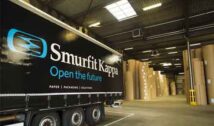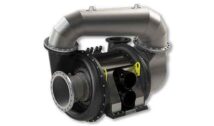
Historically, the chemicals used for pulp production were used once, then discarded. This is a costly way of making pulp and paper required that a steady stream of chemicals be shipped to the mill. Today, to reach production goals in an economically competitive and more sustainable way, these chemicals are recovered and steam is generated in the black liquor recovery boiler (BLRB). By recovering chemicals and generating steam, the pulp mill’s operational expenditure is greatly reduced. In fact, now, in many cases, pulp mills operations are net positive producers of renewable electricity for the grid, generating revenue and offsetting fossil power.
The BLRB is so integral today that, without it, most pulp mills would have to shut down operations due to high chemical and electricity costs. That’s why maintaining the high availability and efficiency of boilers is a top priority for pulp mill production managers. If the recovery boiler is down, pulp production halts, and costs start to accumulate to the tune of $20,000-$100,000 per hour, depending on mill size. This is expected to occur once per year during the planned pulp mill maintenance outage. It’s the unplanned outages that are detrimental in terms of both cost and the lifetime of the pulp mill equipment.
The cost of boiler availability for a pulp mill
Sootblowers in recovery boilers are generally operated non-stop, to keep the flue gas path clean and prevent the fouling and sintering of accumulations on heat exchanger surfaces. An issue with conventional sootblowing is that over 90% of the cleaning effect occurs at the first impact of the steam on the heat exchanger surfaces, which means that the time and steam used on the return stroke mostly go to waste.
The cost of steam sootblowing is 5-10% of the steam generated in the BLRB. This directly affects the key performance index of energy consumption/ADMT and water consumption/ADMT. The alternative cost of sootblowing is to consume more fuel in auxiliary boilers or generate renewable power.
The cost of the steam itself depends on the size of the pulp mill but is generally around $10 per ton. For a BLRB generating 300 t/h of steam, this means the steam sootblowing costs $1.3-$ 2.5 million per year.
Combined with the cost of pulp mill operations, the average annual cost of boiler availability for a pulp mill is well above $2 million, meaning the system must be operated as efficiently as possible in order to reduce costs without affecting availability.
1. Sootblow more, with less steam
To improve pulp mill sustainability while staying ahead of the competition, many pulp mills operations adopt a holistic approach that balances availability with the cost of steam sootblowing.
The patented solution by Heat Management is called a High Impact Sootblowing System (HISS™), and simply reduces the operational expenditure of the sootblowing system while improving the availability of the BLRB to enable increased production.
HISS™ is a tailored solution that results in great environmental and economical benefits. The solution includes a software and hardware update together with process follow-up and optimization by sootblowing experts. By using the HISS™ solution, the following results can be obtained:
• Reduce sootblower steam consumption by 30-45%. or
• Increase sootblowing capacity (starts per day) by 100%. or
• A combination of the above.
Using HISS™, pulp mills can enjoy a guaranteed sootblowing steam savings of 30% with the same or better BLRB availability. For the example under (1), it results in a guaranteed annual savings of $400,000-$750,000 in steam. The result is lower energy cost/ADMT and lower water cost/ADMT. The short return on investment of 0,5-1,5 years makes HISS™ the go-to solution for pulp mills seeking to take control of BLRB availability while comfortably moving production beyond technical specification.
Several pulp mills have successfully implemented the HISS™ solution. For example at BillerudKorsnäs Gruvön in Sweden. You can find more information here and download the case study.
2. Increasing boiler load
Some pulp mill operations are more interested in increasing the boiler load than saving steam using HISS™. The increase in the number of sootblowing starts will significantly improve the cleaning effect in the boiler, in turn enabling a boiler load increase. BillerudKorsnäs Gruvön in Sweden is one of our customers who managed to increase the boiler load by 7,8% using HISS™.
Read a case study about how our customers are able to increase the load and save steam at the same time here.
3. Better for pulp mill productivity and the environment
Improved BLRB availability from dynamic operational and strategic sootblowing capacity plus millions in savings from increased and safe production levels adds up to a huge competitive advantage for pulp mills operations. What’s more, the resulting energy and water savings per ADMT contribute directly to more sustainable and circular operations—making solutions like HISS™ ideal for pulp mills reaching for higher productivity and sustainability goals.
4. Reduced wear on boiler equipment
Operating steam sootblowers normally, using full steam flow in both directions, can be compared to fully opening and closing the tap in your kitchen or bathroom, but with significantly higher pressure. These “pressure hammers” or “pressure variations” are causing wear on boiler equipment. Using HISS™ Overlapping function, these pressure hammers will become evened out to avoid pressure hammers, which in turn leads to a substantial reduction in boiler wear. Increasing the lifetime of boiler equipment leads to big savings in maintenance costs whilst reducing the environmental impact.
5. Improved cleaning with Infrasound Cleaning
Some pulp mills operations encounter issues with poor precipitator performance, limiting boiler load, unstable differential pressure, reduced availability, high ID-fan load, unplanned outages for manual cleaning.
Heat Management’s Infrasound Cleaning system installed in the “gooseneck” and precipitation has proven to mitigate or eliminate these issues.
Stevenson, USA, managed to avoid outages and remove their plugging issues among other benefits, resulting in an ROI of only a few months.
BillerudKorsnäs Frövi fully eliminated plugging and fouling issues, completely eliminating the need for water washes, stabilizing the differential pressure, ID fan load, all while achieving pulp production records.







